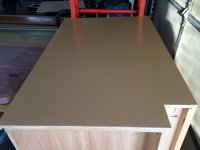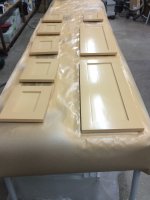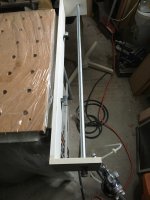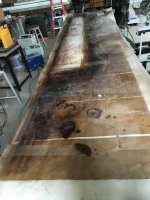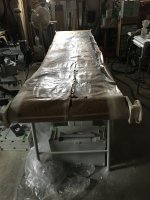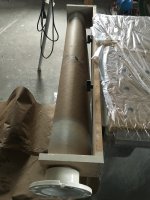Kodi Crescent
Member
- Joined
- Aug 6, 2010
- Messages
- 791
Hi,
I'm getting ready to buy some cabinets for a home office. I'm trying to make a "paint myself" vs. "have painted" decision and I'd like some input. Here's what I have in in mind for the cabinet order, all Shaker style doors:
(2) 2 drawer 2 door base cabinets (24"W x 21"D x 36"H)
(1) 3 drawer base cabinet (16.5"W x 24"D x 28.5"H)
(1) 2 drawer 2 door base cabinet (24"W x 24"D x 28.5"H)
(2) 2 door wall cabinets (24"W x 14" D x 37"H)
(1) 1 door glass front wall cabinet (16.5"W x 12"D x 37"H)
(1) 2 door glass front wall cabinet (24"W x 12"D x 37"H)
(1) Open front wall bookshelf (36"W x 12"D x 37"H)
(2) Base end panels (3/4"W x 24 5/8"D x 28.5"H)
(3) Minor size end panels
(4) Filler strips (2.25"W x 39"L)
(2) Light valence rails (2"W x 90"L)
The interiors of many of the cabinets are pre-finished. I'd have to paint the following:
10 Shaker style doors
3 - 6 lite glass doors
9 Shaker style drawer fronts
2 upper cabinets (glass cabinets are unfinished)
1 open wall bookshelf (comes unfinished)
4 filler strips
2 light valence rails
I have a Fuji Q4 HVLP, limited spraying experience, would need to setup something in my garage, and wait until Spring probably for warmer temps.
The difference between buying unfinished and finished is $2300. When the company paints they do 2 coats of primer and 2 coats of paint. They want $2300 for this. Is this a good deal, or am I better off finishing these myself?
Any input is appreciated!
I'm getting ready to buy some cabinets for a home office. I'm trying to make a "paint myself" vs. "have painted" decision and I'd like some input. Here's what I have in in mind for the cabinet order, all Shaker style doors:
(2) 2 drawer 2 door base cabinets (24"W x 21"D x 36"H)
(1) 3 drawer base cabinet (16.5"W x 24"D x 28.5"H)
(1) 2 drawer 2 door base cabinet (24"W x 24"D x 28.5"H)
(2) 2 door wall cabinets (24"W x 14" D x 37"H)
(1) 1 door glass front wall cabinet (16.5"W x 12"D x 37"H)
(1) 2 door glass front wall cabinet (24"W x 12"D x 37"H)
(1) Open front wall bookshelf (36"W x 12"D x 37"H)
(2) Base end panels (3/4"W x 24 5/8"D x 28.5"H)
(3) Minor size end panels
(4) Filler strips (2.25"W x 39"L)
(2) Light valence rails (2"W x 90"L)
The interiors of many of the cabinets are pre-finished. I'd have to paint the following:
10 Shaker style doors
3 - 6 lite glass doors
9 Shaker style drawer fronts
2 upper cabinets (glass cabinets are unfinished)
1 open wall bookshelf (comes unfinished)
4 filler strips
2 light valence rails
I have a Fuji Q4 HVLP, limited spraying experience, would need to setup something in my garage, and wait until Spring probably for warmer temps.
The difference between buying unfinished and finished is $2300. When the company paints they do 2 coats of primer and 2 coats of paint. They want $2300 for this. Is this a good deal, or am I better off finishing these myself?
Any input is appreciated!

